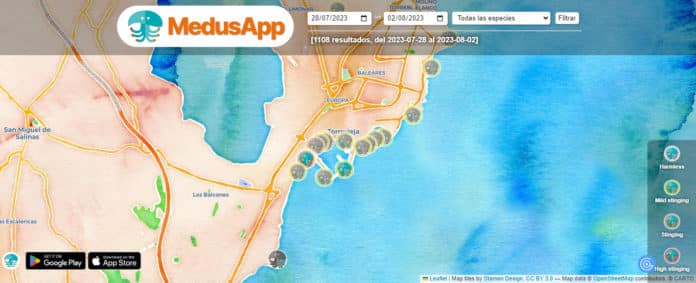Many people enjoy a day at the beach, but so do many of the creatures who call the sea home, including jellyfish, although humans don´t always like to see these creatures in their natural habitat, but the good news is there´s an app that reports their positions in real time.
The increase in the appearance of jellyfish has been blamed on a number of different reasons, including the rising temperature of the sea, a subsequent displacement of natural predators, and overfishing, all of which a caused by humans, but humans at the Polytechnic University of Valencia have developed the MedusApp which is a jellyfish map of Spain, so that you can avoid interaction, and leave them alone.
There is a website, medusapp.net, which offers links to the iOS and Android apps, or you can search direct, and features a map of Spain with beaches shown and a colour code whereas green dots indicate the areas or beaches that are free of jellyfish. If there is a notice without colour, it means that jellyfish have been found in that area and they are not stinging. In the case of those that itch, they are differentiated as follows:
Yellow – Mildly stinging jellyfish
Orange – Stinging Jellyfish
Red – Very stinging jellyfish
The warning system allows you to filter the jellyfish map by dates. In this way, the areas of greatest risk or in which there are usually more registered cases can be detected.
As the app features user generated content, you can also submit your own reports if you see a jellyfish you would like to share.





